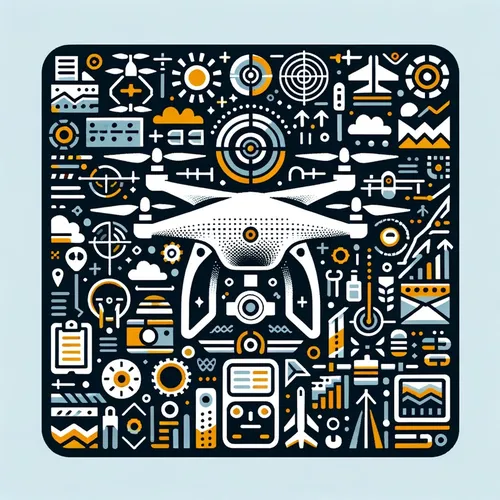Drones Soar, Regs Roar: Pilots Navigate Booming Biz, BVLOS Buzz, and Skydio's New Toy!
- Author
- Quiet. Please
- Published
- Sat 26 Jul 2025
- Episode Link
- https://www.spreaker.com/episode/drones-soar-regs-roar-pilots-navigate-booming-biz-bvlos-buzz-and-skydio-s-new-toy--67126233
This is you Professional Drone Pilot: Flight Tips & Industry Updates podcast.
The commercial drone industry is advancing rapidly, and as we move past July twenty-sixth, twenty twenty-five, there is a surge in opportunities and challenges for professional drone pilots, aerial photographers, and inspection specialists. According to recent industry reports, the enterprise drone sector is projected to expand from just over two billion dollars in 2025 to more than ten billion by 2035. Commercial applications in logistics, construction, agriculture, and energy are driving market growth, with the North America drone market alone expected to reach nearly twenty-seven billion dollars by 2033. This exponential trajectory is fueled not only by demand for data-driven aerial solutions, but also by regulatory changes and technological advancements.
On the regulatory front, the Federal Aviation Administration has reinforced the need for recurrent online training every two years and continues its push towards beyond visual line of sight, or BVLOS, operations. The recently enacted Countering CCP Drones bill restricts Chinese-made drone imports, incentivizing the shift toward National Defense Authorization Act-compliant, domestically manufactured platforms. Staying current with Part 107 certification, maintaining accessible records, and following new BVLOS and U-space protocols will be crucial for those pursuing complex, high-value missions.
Business-wise, high-margin opportunities include aerial surveying, mapping, infrastructure inspections, and precision agriculture. Drone-as-a-Service, where clients pay for data rather than hardware, is rising sharply, allowing pilots to offer scalable, recurring services to construction, mining, and real estate clients. Effective client relations demand clear deliverables, transparent pricing, and the ability to educate customers on regulations and safety. For pricing strategies, consider value-based pricing for unique projects and service bundles for recurring work.
From a technical perspective, advanced flight techniques—such as leveraging waypoint automation, low-altitude obliques, and precision hover for detailed inspections—can significantly boost deliverable quality. Regularly calibrate your inertial measurement units and propellers, and perform preflight and postflight checks to optimize performance and reduce breakdown risk. Always verify firmware versions and monitor battery cycles for safety and liability management.
Staying up to date on insurance is more important than ever, with policies now covering data loss, cyber security, and third-party damages. Weather planning is critical: utilize real-time meteorological data and anticipate microclimate shifts, especially for urban or energy-sector operations.
In current news, Skydio just announced its new autonomous inspection drone for utilities, DJI is rolling out remote ID compliance upgrades ahead of U.S. enforcement, and the FAA’s new proposed rulemaking for BVLOS flights is under public comment, signaling a major regulatory pivot.
Listeners should prioritize advanced recurrent training, build diversified client portfolios, and assess their risk coverage annually. As the regulatory landscape evolves, those who stay informed and adaptable will be best positioned to capture new market segments.
Thank you for tuning in, and make sure to come back next week for more insights and updates. This has been a Quiet Please production. For more, check out Quiet Please dot A I.
For more http://www.quietplease.ai
Get the best deals https://amzn.to/3ODvOta
